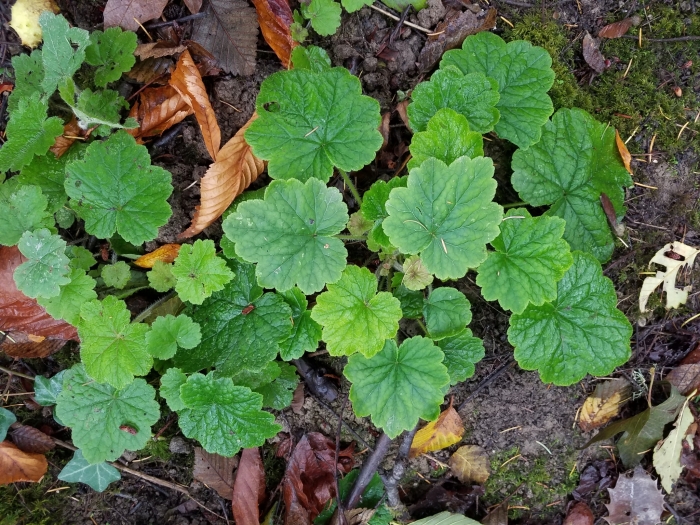Bigflower Tellima
(Tellima grandiflora)
Bigflower Tellima (Tellima grandiflora)
/
/

Anna
Public Domain
Image By:
Anna
Recorded By:
Copyright:
Public Domain
Copyright Notice:
Photo by: Anna | License Type: Public Domain | License URL: http://creativecommons.org/publicdomain/zero/1.0/ | Rights Holder: Anna | Publisher: iNaturalist | Date Created: 2018-10-09T11:21:13-07:00 |




















































Estimated Native Range
Summary
Tellima grandiflora, commonly known as Bigflower Tellima, is an evergreen or semi-deciduous perennial herb native to moist, shaded forest floors and stream banks in the Pacific Northwest of the USA, including regions of Northern California, Oregon, Washington, and Western Canada. It typically reaches heights of 30 cm with a similar spread, featuring rounded, stalked, and bluntly toothed basal leaves emerging from a rootstock. The plant maintains its foliage through mild winters. In spring and early summer, it produces spikes of terminal racemes up to 60 cm high, adorned with greenish-white to purple flowers. The flowers have a green calyx 6–8 mm long, deeply fringed petals that are pinnately divided and spreading, 10 stamens, and 2 styles, making them quite showy.
Bigflower Tellima is valued for its attractive foliage and delicate, fringed flowers, which add texture and subtle color to shade gardens. It is commonly used in woodland gardens, borders, and as ground cover. This plant is easy to maintain, self-seeds in suitable climates, and has been developed into various strains for garden use. It thrives in part shade, requires medium amounts of water, and is adaptable to a range of soil drainage conditions from slow to fast. While generally disease-free, it can occasionally suffer from rust or mildew in overly moist conditions. Gardeners should be aware that in optimal conditions, it may spread vigorously.CC BY-SA 4.0
Bigflower Tellima is valued for its attractive foliage and delicate, fringed flowers, which add texture and subtle color to shade gardens. It is commonly used in woodland gardens, borders, and as ground cover. This plant is easy to maintain, self-seeds in suitable climates, and has been developed into various strains for garden use. It thrives in part shade, requires medium amounts of water, and is adaptable to a range of soil drainage conditions from slow to fast. While generally disease-free, it can occasionally suffer from rust or mildew in overly moist conditions. Gardeners should be aware that in optimal conditions, it may spread vigorously.CC BY-SA 4.0
Plant Description
- Plant Type: Herb
- Height: 1-2 feet
- Width: 1-2 feet
- Growth Rate: Moderate
- Flower Color: Cream, Green, Pink, White
- Flowering Season: Spring, Summer
- Leaf Retention: Evergreen, Semi-Deciduous
Growth Requirements
- Sun: Part Shade
- Water: Medium
- Drainage: Slow, Medium, Fast
Common Uses
Bird Garden, Butterfly Garden, Fragrant, Groundcover, Low Maintenance, Rock Garden, Salt Tolerant
Natural Habitat
native to moist, shaded forest floors and stream banks in the Pacific Northwest of the USA, including regions of Northern California, Oregon, Washington, and Western Canada
Other Names
Common Names: Fringecups, Finge Cups, Storblomstret Biskopshat, Großblütige Tellima, Falsche Alraunwurzel, Franjekelk, Anagrambräcka
Scientific Names: , Tellima grandiflora, Tellima odorata, Mitella acerifolia, Mitella grandiflora, Tairella odorata, Tellima breviflora, Tellima grandiflora var. virescens, Tellima nudicaulis, Tiarella alternifolia
GBIF Accepted Name: Tellima grandiflora (Pursh) Douglas ex Lindl.